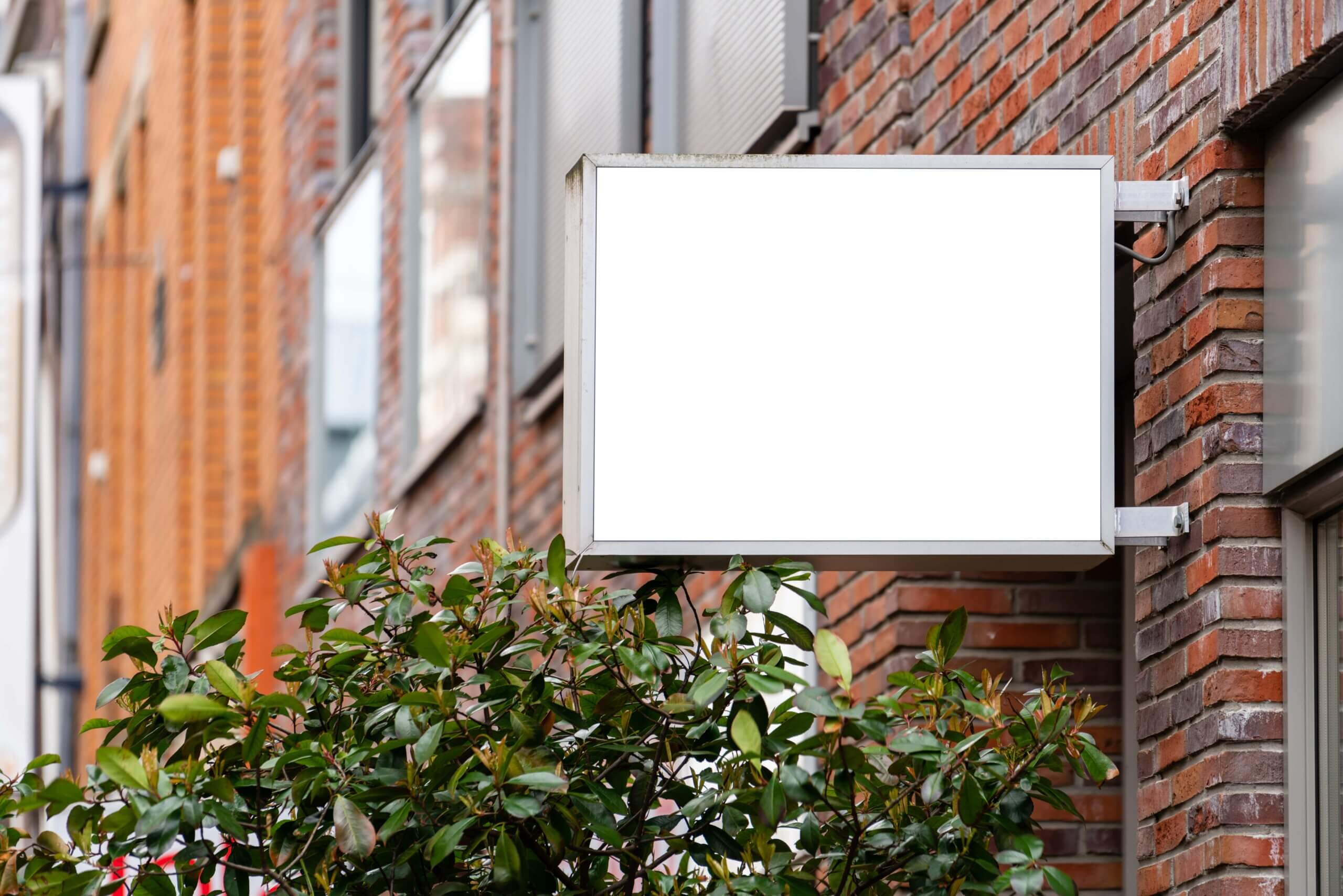There have been recent changes to the applicable law, and we invite you to read the article available here to find out more.
The Magasins Best Buy ltée decision and the response by Quebec legislature
Pursuant to the Charter of the French Language (the “Charter”), the legislator can enact, by regulation, provisions governing public signs and commercial advertising in a language other than French1. From this legislative authority comes the Regulation respecting the language of commerce and business (the “Regulation”) which moderates the key principle that public signs and commercial advertising must be in French only, providing notably that:
« 25. On public signs and posters and in commercial advertising, the following may appear exclusively in a language other than French:
[…]
4° a recognized trade mark within the meaning of the Trade Marks Act (R.S.C. 1985, c. T-13), unless a French version has been registered. »2
Pursuant to the text hereabove, a business could publicly display a trademark, whether filed3 or not, drawn up in a language other than French only and of which no corresponding French version has been filed. Many businesses wanted to ensure the merits of such an interpretation and, in 2013, addressed the Superior Court of Quebec for a declaratory judgment on the issue4. Throughout the course of this legal proceeding, the Quebec Attorney General attempted to convince the court, through various interpretative stunts, that the Charter and the Regulation could not possibly allow such a breach in the protection of the French language in the province.
Ultimately, the Superior Court allowed the motion and declared that businesses that display their trademarks, and which do not contain French terms, on the storefront of their Québec operated commercial establishments, comply with the provisions of the Charter and Regulation5. Considering the importance of the issue, the decision was appealed before a bench of five judges of the Court of Appeal of Quebec. In a unanimous decision rendered on April 27, 2015, the highest judicial authority of the province confirmed the judgement rendered in first instance6. The Court of Appeal considers that the Charter and Regulation are clear, therefore the interpretation advocated by the Attorney General cannot be retained7.
In reaction to this decision of the Court of Appeal of Quebec, the Quebec government modified the Regulation by passing an order8 in council that inserts provisions to regulate the right of businesses to display “outside an immovable”9 trademarks drawn up in a language other than French only. What the provisions actually created was the obligation to ensure “sufficient presence of French” on the premises for businesses that wish to pursue such a display:
“25.1. Where a trademark is displayed outside an immovable only in a language other than French under paragraph 4 of section 25, a sufficient presence of French must also be ensured on the site, in accordance with this Regulation.
For the purposes of the first paragraph, the presence of French refers to a sign or poster with
1° a generic term or a description of the products or services concerned;
2° a slogan;
3° any other term or indication, favouring the display of information pertaining to the products or services to the benefit of consumers or persons frequenting the site.
[…]
25.3. Within the meaning of section 25.1, the sufficient presence of French means signs or posters whose qualities
1° give French permanent visibility, similar to that of the trade mark displayed; and
2° ensure its legibility in the same visual field as that mainly covered by the trademark signs or posters.
Signs or posters in French that, in relation to the trademark signs or posters, are designed, lighted and situated so as to make them easy to read, both at the same time, at all times when the trade mark is legible, without the signs or posters being necessarily present in the same place, in the same number, in the same materials or in the same size are considered to meet those requirements.”10
These provisions have been in effect since November 25, 2016 and apply to all displays commencing thereafter, outside an immovable, of a trademark written in a language other than French11. With regards to displays of such a nature that began prior to the aforementioned date, a three-year complying grace period to the new provisions was granted by the legislator12. Thus, since November 25, 2019, any business that displays, outside an immovable, a trademark in a language other than French, must ensure “sufficient presence of the French language” (as defined in the Regulation) on the premises, subject to an exception provided under the Regulation13.
The assent of Bill 96 and the major impacts on the legal framework of public signs of trademarks written in a language other than French
On June 1st, 2022, the National Assembly of Quebec passed Bill 96, which became An Act respecting French, the official and common language of Québec14 (the “Act”), and which contains many provisions that modify the Charter, notably regarding public signs and commercial advertising of trademarks drawn up in a language other than French. More specifically, the Act provides the incorporation of the following section in the Charter:
”58.1. Despite section 58, on public signs and posters and in commercial advertising, a trademark may be drawn up, even partially, only in a language other than French, provided the trademark is registered within the meaning of the Trademarks Act (Revised Statutes of Canada, chapter T-13) and no corresponding French version appears in the register kept according to that Act.
However, on public signs and posters visible from outside premises, French must be markedly predominant where such a trademark appears in a language other than French.”15
It is apparent from this text that only filed (meaning registered) trademarks written in a language other than French, and of which no French version "appears"16 in the register of trademarks maintained by the Canadian Intellectual Property Office, can appear on public signs or commercial advertising without the need of a French version being displayed "in a markedly predominant" manner. In a regulation made pursuant to the Charter, the Government of Québec mentions that “public signs and posters and posted commercial advertising that are both in French and in another language, French is markedly predominant where the text in French has a much greater visual impact than the text in the other language“, exception made of the visual impact of the trademark drawn up in a language other than French17. That same regulation specifies that the “much greater visual impact” is irrefutably presumed (i.e., it is impossible to prove the contrary) if all the following conditions are met, as the case may be:
“2. Where texts both in French and in another language appear on the same sign or poster, the text in French is deemed to have a much greater visual impact if the following conditions are met:
1° the space allotted to the text in French is at least twice as large as the space allotted to the text in the other language;
2° the characters used in the text in French are at least twice as large as those used in the text in the other language; and
3° the other characteristics of the sign or poster do not have the effect of reducing the visual impact of the text in French.
3. Where texts both in French and in another language appear on separate signs or posters of the same size, the text in French is deemed to have a much greater visual impact if the following conditions are met:
1° the signs and posters bearing the text in French are at least twice as numerous as those bearing the text in the other language;
2° the characters used in the text in French are at least as large as those used in the text in the other language; and
3° the other characteristics of the sign or poster do not have the effect of reducing the visual impact of the text in French.
4. Where texts both in French and in another language appear on separate signs or posters of a different size, the text in French is deemed to have a much greater visual impact if the following conditions are met:
1° the signs and posters bearing the text in French are at least as numerous as those bearing the text in the other language;
2° the signs or posters bearing the text in French are at least twice as large as those bearing the text in the other language;
3° the characters used in the text in French are at least twice as large as those used in the text in the other language; and
4° the other characteristics of the signs or posters do not have the effect of reducing the visual impact of the text in French.”18
Any public signs and posters visible from outside the “premises”19 on which appears a trademark drawn up in a language other than French, systematically needs to incorporate a French version displayed in a markedly predominant manner20.
Incidentally, it is in the interest of the businesses that publicly display their trademarks drawn up in a language other then French to quickly start the process to ensure their compliance to the new provisions of the Charter effective as of June 1, 202521. In fact, any contravention to these provisions is susceptible to a fine (of an amount ranging from $3,000 to $30,000 for a first offence by a business)22 and/or to specific measures (e.g., issuance of an order enjoining its recipient to comply with the provisions under study, or an application for an injunction with the Superior Court for the compliance to these provisions)23.
What to remember, from a practical point of view
- If your trademark drawn up in a language other than French is not registered on June 1, 2025, it will be illegal for your business to display your trademark in public signs and commercial advertising in Quebec unless a French version appears in a “markedly predominant” manner. For more information on the trademark registration process with the Canadian Intellectual Property Office, you can contact Me Adam Ansari at adam.ansari@cainlamarre.ca.Note that this same requirement will be applicable, as of June 1, 2025, for a trademark displayed on a product in a language other than French. And, if a generic term or a description of the product is included in the trademark, said generic term or description must appear on the product (or on a medium permanently attached to the product) translated in French24.
- If your trademark drawn up in a language other than French appears on the public sign visible from outside the premises as of June 1, 2025, you will need to make sure that the French version appears in a “markedly predominant” manner25. In this regard, it will be presumed that you are in compliance if the French version of your trademark appears on the same sign (i) in a space at least twice as large as the one devoted to the text in another language and (ii) if the characters are at least twice as large as those used in the text written in another language.
----------------------------------
[1] Charter of the French Language, CQLR, s. 58(3).
[2] Regulation respecting the language of commerce and business, CQLR c C-11, r. 9, s. 25.
[3] Note that a “filed” trademark is a registered trademark. See Trademarks Act (R.S.C., 1985, c. T-13), s. 2 (definition of a “registered trademark”).
[4] Magasins Best Buy ltée v. Québec (Attorney General), 2014 QCCS 1427.
[5] Id., par. 266.
[6] Québec (Attorney General) v. Magasins Best Buy ltée, 2015 QCCA 747., par. 34.
[7] Id., par. 23-29.
[8] Order in Council 887-2016 adopting the Regulation respecting the language of commerce and business, October 12, 2016, sec. 1.
[9] The scope of the term “outside an immovable” is provided under the Regulation respecting the language of commerce and business, prec., note 2, s. 25.2.
[10] Regulation respecting the language of commerce and business, prec., note 2, s. 25.1 and 25.3.
[11] Order in Council 887-2016, prec., note 9, s. 2.
[12] Id.
[13] See Regulation respecting the language of commerce and business, prec., note 2, par. 25.2(3) and (4).
[14] An Act respecting French, the official and common language of Québec, 2022, c. 14 (formerly Bill 96)
[15] Id., sec. 48 (addition of section 58.1 to the Charter).
[16] Id. The use of the expression “appears” implies that the exception provided for in subsection 58.1(1) of the Act no longer applies in respect of a registered trademark written in a language other than French as soon as a French version of this trademark is the subject of an entry in the register of trademarks of the Canadian Intellectual Property Office (such an entry occurring when filing an application for registration).
[17] Regulation defining the scope of the expression “markedly predominant” for the purposes of the Charter of the French language, CQLR c C-11, r 11, s. 1.
[18] Id., s. 2 to 4.
[19] See Regulation respecting the language of commerce and business, prec., note 2, par. 25.2(4)3) that defines the term “premises” as follows: premises, means a space, closed or not, devoted to an activity, in particular a stand or counter intended for the sale of products in a mall, excluding a temporary or seasonal facility.
[20] An Act respecting French, the official and common language of Québec, prec. note 14.
[21] Id., par. 218(1)6).
[22] Id., sec. 117 (replacing section 205 of the Charter). Note that the minimum and maximum thresholds provided under this section are doubled for a second offence and tripled for any additional offence (see new wording under para. 207(1) of the Charter).
[23] Id., sec. 116 (replacing section 177 and Title IV of the Charter, comprising sections 185 to 198).
[24] Id., sec. 43 (addition of section 51.1 to the Charter).
[25] Note that this requirement is also applicable to trade names (the names under which a company does business) subject of a public display visible from outside a premise, insofar as such trade names include an expression in a language other than French. See the Act respecting French, the official and common language of Québec, prec. note 14. s. 49 (addition of section 68.1 to the Charter).


















